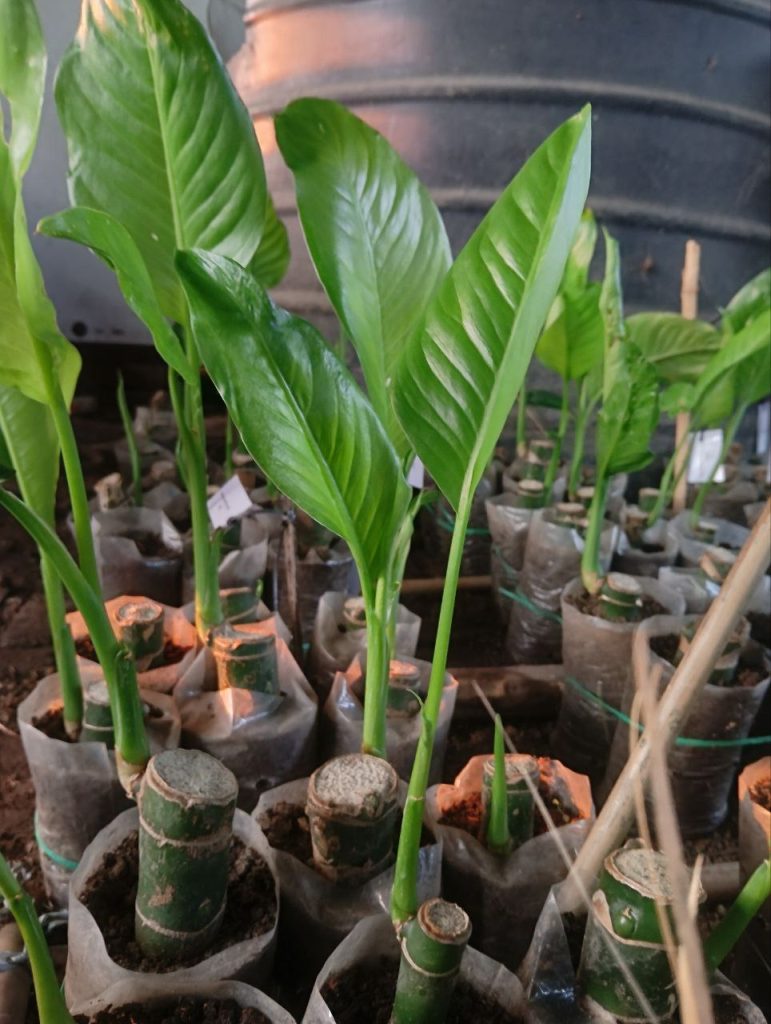
Dieffenbachia, affectionately known as Dumb Cane, is a beloved houseplant celebrated for its lush, variegated foliage and easy-going nature. Native to the tropical regions of Central and South America, this plant brings a touch of the tropics into your home. Whether you’re a seasoned plant parent or just starting your green journey, understanding the care and propagation of Dieffenbachia can help your plant thrive and multiply.
🌞 Light Requirements
Dieffenbachia thrives in bright, indirect light. While it can tolerate lower light conditions, insufficient light may lead to slower growth and less vibrant leaf patterns. Direct sunlight should be avoided, as it can scorch the leaves. To ensure even growth, rotate your plant periodically so all sides receive equal light exposure.
💧 Watering Needs
Maintaining the right moisture level is crucial for Dieffenbachia. Water the plant when the top 1–2 inches of soil feel dry to the touch. Overwatering can lead to root rot, while underwatering may cause the leaves to droop. Ensure the pot has proper drainage to prevent water from accumulating at the bottom.
🌡️ Temperature and Humidity
Dieffenbachia prefers warm temperatures ranging from 65°F to 75°F (18°C to 24°C). Avoid placing the plant in areas with drafts or sudden temperature fluctuations. High humidity levels are ideal, but the plant can adapt to average indoor humidity. To boost humidity, consider misting the leaves or placing a humidifier nearby.
🌱 Soil and Fertilization
Use a well-draining potting mix rich in organic matter for Dieffenbachia. A mix containing peat moss, perlite, and pine bark works well. Fertilize the plant every 4–6 weeks during the growing season (spring and summer) with a balanced, water-soluble fertilizer to promote healthy growth.
✂️ Pruning and Maintenance
Regular pruning helps maintain the plant’s shape and encourages bushier growth. Remove yellowing or damaged leaves promptly. If the plant becomes leggy, consider cutting back the stems to stimulate new growth from the base. Always use clean, sharp tools to prevent the spread of disease.
⚠️ Toxicity Warning
Dieffenbachia contains calcium oxalate crystals, making it toxic if ingested by humans or pets. Symptoms can include oral irritation and swelling. Always handle the plant with care, wear gloves when pruning, and keep it out of reach of children and animals.
🌿 Propagation Methods
Expanding your Dieffenbachia collection is both rewarding and straightforward. Here are the primary methods:
1. Stem Cuttings
Select a healthy stem with at least one node (the point where leaves emerge). Cut a 4–6 inch section using sterilized scissors. Place the cutting in water or moist potting mix. If using water, change it every few days to prevent stagnation. Roots typically develop within a few weeks, after which you can transplant the cutting into soil.

2. Air Layering
This method involves encouraging roots to form on a stem while it’s still attached to the parent plant. Make a small upward cut on the stem, wrap moist sphagnum moss around the wound, and cover it with plastic wrap to retain moisture. Once roots develop, cut below the new root system and plant it separately.
3. Root Division
During repotting, gently separate the plant into sections, ensuring each has a portion of the root system. Plant each division in its own pot with fresh soil. This method is especially effective for mature plants with multiple stems.
🛡️ Common Issues and Solutions
- Yellowing Leaves: Often a sign of overwatering or poor drainage. Ensure the soil isn’t soggy and the pot has adequate drainage holes.
- Drooping Leaves: Can result from underwatering or sudden temperature changes. Check soil moisture and relocate the plant if it’s near drafts.
- Pest Infestations: Watch for signs of spider mites, aphids, or mealybugs. Treat infestations promptly with insecticidal soap or neem oil.
🌼 Embracing the Beauty of Dieffenbachia
With its striking foliage and relatively low maintenance needs, Dieffenbachia is a delightful addition to any indoor plant collection. By providing the right care and exploring propagation methods, you can enjoy the lush beauty of this tropical plant and even share it with friends and family.
